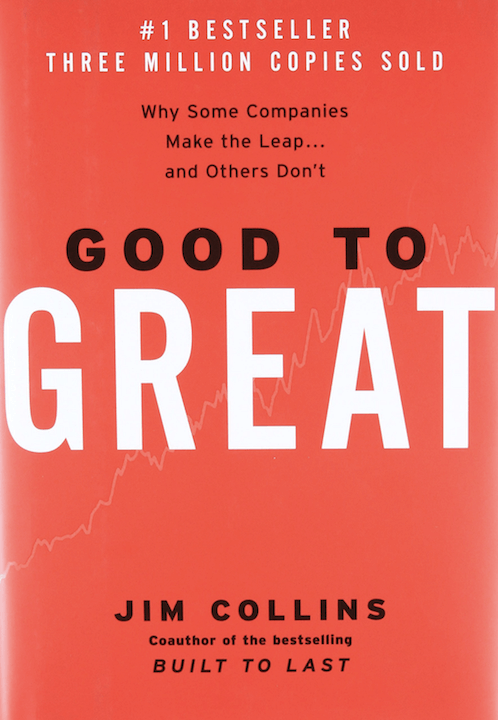
The fashion industry is unique in that it is extremely unpredictable, competitive, and has low barriers to entry for new brands. The price of high street fashion has fallen dramatically in recent years, as big brand houses fight to stay relevant and maintain both their market share and brand equity. For many brands, this means launching new collections several times a year. An example of this would be the brand Chanel, which releases approximately six collections every 12 months[1].
Furthermore, the world’s leading apparel groups are under scrutiny when it comes to human rights, corporate responsibility, and sustainability. With multiple incidents such the collapse of Rana Plaza in 2013, the report from Oxfam that sportswear brands were procuring from factories who were regulatory violating on basic human rights[2] and documentaries such as True Cost[3], brand houses need to put corporate responsibility at the top of their agendas.
It is no wonder, therefore, that strategic procurement and supplier management plays such a critical role in the future of fashion.
Here are 10 things fashion, textile and apparel buyers should consider:
1. Sustainability and Corporate Social Responsibility (CSR)
The Clean Clothes Organization has shown that workers earn less than 1% of the retail value of a t-shirt that is made in their factories in Bangladesh[4]. This, coupled with several incidents around the globe highlighting the terrible working conditions that factories and clothing workers face, has damaged many brands’ reputations. So it is no surprise that responsible and sustainable sourcing are quoted as being top priority on major brands’ agendas according to a survey run by McKinsey[5].
(Source: Clean Clothes Campaign, Poverty Wages[6])
Procurement teams need to ensure adherence to ethical standards within the supply chain. Procurement teams[7]:
· Should ensure adequate planning and responsible purchasing practises to reduce the risk of overtime, late wage payments and health and safety violations.[8]
· Are responsible, when setting up supplier contracts and relationships, to set them up in such a way that supports an environment in which human rights can be properly respected and implemented.
· Can use different methods to secure workers’ wages. (One method a buyer can use is to ring fence labour costs in negotiations with suppliers. This means that the labour cost is fixed and cannot be negotiated which in turn means that garment workers’ wages are never negatively affected by price negotiations).[9]
· Can use organizations such as SEDEX who assess and audit manufacturers to ensure human rights are being respected.
(Source: Dhaka Tribunal[10])
2. Standards and commitments
Over the past few years, there have been signals that indicate significant changes may be coming to the fashion industry, in terms of regulations in Western Europe and the United States. US fashion brands have existed in a stable, relatively low-regulatory environment for decades.[11] There are some groups and standards that buyers need to be aware of:
· The ACT commitment on purchasing practises: Companies such as H&M, Primark and Lidl[12] as signatories on the ACT commitment, have five commitments that they need to adhere to in order to be classified as a responsible buyer. These five commitments are:[13]
i. purchasing prices include wages as itemized costs
ii. fair terms of payment
iii. better planning and forecasting
iv. committing to undertake training on responsible sourcing and buying
v. practising responsible exit strategies.
· Sizing – the ISO 8559 series of standards (“Clothing sizing systems – size designation, size measurement methods and digital fittings”) helps manufacturers know which body part to measure to ensure the proportions are correct[14] and to keep sizing consistent across brands.
· The EU’s General Product Safety Directive (GPSD), REACH standards and Restricted Substance List)
· For products marketed to children, each country will also have special requirements for flammability and wearability
· For medical apparel such as PPE, medical device requirements such as CE marks in Europe should be adhered to.[15] Military garments also have to meet specific standards, depending on the country.
· There are certification programmes that consumers use that give some kind of a corporate responsibility and sustainability tick to a garment. These include Bluesign, OekoTex, OCS and GOTS.[16] Brands will want to get this tick to gain the trust of their customers.
· Another useful resource for fashion buyers is to understand the requirements of the Global union IndustriAll.
3. MOQ and Lead times
It is reported that once a season is finished, and a particular collection has reached the end of its natural lifecycle, any item that remains will have lost more than half their value. Left over stocks and the cost of storing and writing them off can make or break a brand’s bottom line.[17] With brands releasing multiple collections per year, products need to be distributed quickly, and therefore brands need suppliers that are flexible and responsive.[18] If you have faster lead times, then you can afford lower MOQs, so negotiating flexibility with suppliers is key. Buyers should review whether it is better to ‘near source’ or ‘local source’ over sourcing from cheaper but countries that are further afield.[19] It is a balance between having enough stock on shelf to meet demand, but not having too much that you end up with huge write-off costs.
4. Net Working Capital (NWC)
In all industries, failure to manage cash flows (net working capital) can result in the bankruptcy of a company. Managing stock levels is one of the key levers to ensuring your NWC is under control. Sourcing professionals need to ensure that they are critical of MOQs versus price and lead time to protect their companies from wasting money or, in the worst case, going bankrupt.
5. Latest Trends
Brand houses spend big budgets to ensure they stay ahead of the latest trends. As an example, Zara hires over 300 designers[20] and H&M hires over 160.[21] Procurement plays a role in supporting companies in keeping in touch with the latest trends as they can act as a conduit for ideas from the suppliers to the business and vice-versa. A good fashion buyer should also be familiar with materials and basic fashion terminology to truly support the designers’ visions.
6. Quality considering your target market
A fashion buyer needs to know and understand the brand house they are buying for. Whether their brand house represents affordability or luxury, will dramatically alter how buyers should approach what they are buying. For luxury brands, quality is the absolute priority as they need to defend their reputation and live up to their premium promise. Buyers should ensure contracts are set up in such a way that there are clear consequences for poor quality and that responsibilities are outlined clearly for the supplier and the buyer. Buyers that have a deep knowledge on material types will also succeed better in securing and meeting their quality requirements.
7. Information security
With the importance of maintaining an advantage in such a competitive space, the ability to keep a secret is of critical importance for success. Buyers should ensure confidentiality is negotiated into contracts and practised, for instance only sharing information with people that need to know it, password protecting confidential documents and emphasising the importance of confidentiality with suppliers.
8. Risk mitigation
In a highly volatile and seasonal industry, it is important to have a risk mitigation strategy to prevent going out of stock and losing market share to competitors. Potential strategies include:
· Considering near sourcing or local sourcing from artisanal suppliers.
· Decomplexifying the supply chain (understanding end to end of the supply chain then reducing or simplifying stages).
· Having back up suppliers for the most vulnerable part of your supply chain.
9. Digital transformation
Typically eSourcing is not appropriate for most fashion purchases, given that many suppliers, especially of certain materials, are unique (with limited suitable substitutes). Digital tools, however, can be used for managing supplier onboarding, quality, contract compliance, supplier performance and audit.[22] In the case of a generic designed garment or apparel, then one can eSource.
10. Supplier selection and management
All points 1 to 9 rely on suppliers that are flexible, reactive and able to develop products very quickly to the expected quality level. Therefore, having a robust supplier selection process is key. Once you are working with a supplier, it is important to actively manage the relationship. For example, having a scorecard to assess suppliers’ performance can help to understand whether you are getting the service levels required, but remember they should also be allowed to assess your performance as a buyer.
All in all, buying in the fashion industry requires a strategic procurement mindset, and buyers that understand their brands, the materials, the fashion terminology, and their corporate responsibility, will help brand houses thrive in an ever-competitive industry.
[1] Canoa, N, (Jun 2020), CHANEL KEEPS ITS CALENDAR OF 6 COLLECTIONS PER YEAR, https://highxtar.com/chanel-keeps-its-calendar-of-6-collections-per-year/?lang=en, [Accessed: 12 Jan 2022]
[2] Lawrence, F. (Aug 2004), Sportswear firms to investigate Oxfam sweatshop claims, https://www.theguardian.com/uk/2004/mar/04/shopping.sport, [Accessed: 07 Jan 2022]
[3] The Trues Cost, https://truecostmovie.com/, [Accessed: 11 Jan 2022]
[4] Clean Clothes Campaign, Poverty Wages, https://cleanclothes.org/poverty-wages, [Accessed: 11 Jan 2022]
[5] McKinsey, (Oct 2019), Fashion’s new must-have: Sustainable sourcing at scale, https://www.mckinsey.com/industries/retail/our-insights/fashions-new-must-have-sustainable-sourcing-at-scale, [Date accessed 08 Jan 2022]
[6] Clean Clothes Campaign, Poverty Wages, https://cleanclothes.org/poverty-wages, [Accessed: 11 Jan 2022]
[7] Sedex, https://www.sedex.com/about-us/our-members/, [Accessed: 09 Jan 2021]
[8] H&M Group, Responsible purchasing practices, https://hmgroup.com/sustainability/leading-the-change/transparency/responsible-purchasing-practices/, [Accessed 09 Jan 2022]
[9] H&M Group, Responsible purchasing practices, https://hmgroup.com/sustainability/leading-the-change/transparency/responsible-purchasing-practices/, [Accessed 09 Jan 2022]
[10] Dhaka Tribunal, (Aug 2020), Garment workers to graduates: Bangladeshi women aim to shake up textile sector, https://archive.dhakatribune.com/bangladesh/2020/08/02/garment-workers-to-graduates-bangladeshi-women-aim-to-shake-up-textile-sector, [Accessed 07 Jan 2022]
[11] Gamble, M., (Jan 2022), Is the Tide Changing for the Fashion Industry When it Comes to Regulations?, https://www.thefashionlaw.com/is-the-tide-changing-for-the-fashion-industry-regulations-environment-in-the-u-s/, [Accessed 9 Jan 2022]
[12] Industri-All, (Mar 2020), ACT brands commit to responsible business practices in Bangladesh, https://www.industriall-union.org/act-brands-commit-to-responsible-business-practices-in-bangladesh, [Accessed: 12 Jan 2022]
[13] ACT, (Dec 2018), ACT member brands adopt global purchasing practices commitments, https://actonlivingwages.com/2018/12/19/news-on-global-purchasing-practices-commitments/, [Accessed 07 Jan 2022]
[14] Naden, C., ISO (Mar 2017), TINKER TAILOR – CLOTHING SIZE STANDARDS GET A MAKEOVER, https://www.iso.org/news/Ref2172.htm, [Accessed: 07 Jan 2022]
[15] CBI (Dec 2020), What are the requirements for apparel to enter the European market? ,https://www.cbi.eu/market-information/apparel/buyer-requirements, [Accessed: 08 Jan 2022]
[16] Kepes, Ben. (Jan 2022),Fast fashion sucks for the environment, and certification isn’t the answer, https://www.stuff.co.nz/business/opinion-analysis/300491754/fast-fashion-sucks-for-the-environment-and-certification-isnt-the-answer, [date accessed 10 Jan 2022]
[17] Ambrosioni, M., (Jul 2019), Supplier Management and Sourcing in the Fashion Industry – Under the Spotlight, https://www.jaggaer.com/blog/supplier-management-sourcing-fashion-spotlight/ [accessed 12 Jan 2022]
[18] Alzuria A., (Nov 2017), THE PROCUREMENT STRATEGY IN THE FAST FASHION INDUSTRY, https://businesslogisticssite.wordpress.com/2017/11/05/the-procurement-strategy-in-the-fast-fashion-industry/, [Accessed: 09 Jan 2022]
[19] Ambrosioni, M., (Jul 2019), Supplier Management and Sourcing in the Fashion Industry – Under the Spotlight, https://www.jaggaer.com/blog/supplier-management-sourcing-fashion-spotlight/ [accessed 12 Jan 2022]
[20] Hanbury, M, (Nov 2018), These are the tricks that Zara uses to figure out the styles you want before you even do, https://www.businessinsider.co.za/zara-design-process-beats-trends-2018-11?, [Accessed: 11 Jan 2022]
[21] Manrique C. (Dec 2015), H&M: How Fast Fashion Translates into Low Prices and Success, https://digital.hbs.edu/platform-rctom/submission/hm-how-fast-fashion-translates-into-low-prices-and-success/., [Accessed 12 Jan 2022]
[22] Ambrosioni, M., (Jul 2019), Supplier Management and Sourcing in the Fashion Industry – Under the Spotlight, https://www.jaggaer.com/blog/supplier-management-sourcing-fashion-spotlight/ [accessed 12 Jan 2022]


